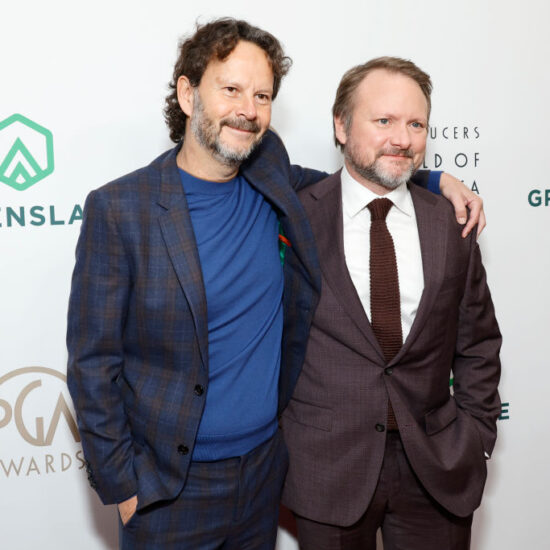
Director Todd Field and cinematographer Florian Hoffmeister tell IndieWire how custom lenses and a digital film emulsion system gave “TÁR” its singular visual style.
Writer-director Todd Field’s “TÁR” is a singular film on many levels, even as it pays homage to the morally complex, often open-ended narratives of the 1970s like “Five Easy Pieces,” “The Conversation,” and “The Last Detail.” Field’s character study of a totally original protagonist is both a detailed anthropological study of the international classical music scene and a novelistic epic that avoids preexisting cinematic reference points. But perhaps its most distinctive quality is its richly textured cinematography, for which director of photography Florian Hoffmeister won the top prize at Camerimage and is now nominated for an Academy Award.
Hoffmeister’s imagery is highly expressive, with lighting that subtly delineates the scenes in which renowned conductor Lydia Tár (Cate Blanchett) is performing (whether it be on a stage or at a one-on-one lunch with a colleague) and the moments where she is “authentic,” whatever that may mean in the context of this often ambiguous film. Yet there’s also a stripped-down detachment to the camera placement, as Hoffmeister and Field eschew conventional coverage in favor of long, unbroken takes that create a sense of psychological unease and distance as Lydia’s career and life begin to unravel.
The lighting tells the story of this unraveling as well; in early scenes like Lydia Tár’s interview with Adam Gopnik or her meal with her benefactor Elliot Kaplan (Mark Strong), Hoffmeister uses a strong key light to convey her power and reinforce the sense that she’s always on stage. In private, less secure moments like the ones where Lydia is alone in her studio, however, the light becomes more neutral and intimate. By the time the film gets to Lydia’s book launch after she has lost control of her public persona, the light on her face is gone — she’s under fluorescents that make it look like she’s about to go in for surgery.
There’s a difficult-to-define tension between Hoffmeister’s frequently beautiful lighting and a desire to deglamorize and demystify Lydia Tár as a figure of power and influence; the look is completely unique to “TÁR” — and is one of the reasons why the movie rewards repeat viewings and close analysis — as the degree to which Lydia’s supremacy is appealing or off-putting seems to shift the more familiar a viewer becomes with both the visual nuances and the subtleties of Blanchett’s performance.
Field and Hoffmeister spent weeks on camera tests before coming to the realization that their intentions required a handmade approach that involved both custom-built lenses and a new form of digital film emulsion. “I remember showing Todd a particular lens that I cherish very much,” Hoffmeister told IndieWire, “and he said, ‘That looks beautiful, but it looks like a movie with a capital M.’” Hoffmeister immediately grasped the degree of authenticity to which Field aspired, and began testing a variety of lenses that he felt would not romanticize Lydia or her surroundings.
Early in the testing process, Field and Hoffmeister fell in love with a lens that was not feasible for a variety of reasons. “It was an old piece of glass, and it was idiosyncratic, to say the least,” Field told IndieWire. “It had huge depth of field issues. But we liked the quality of it a lot and spent a good deal of time trying to figure out how to get there.” Working with ARRI in Berlin, Hoffmeister ultimately realized he could approximate the look of the older lens by using the architecture of ARRI’s Signature Primes but detuning the glass to alter the optics. The trick was to avoid going too far in either direction, since Hoffmeister didn’t want the cinematography to be too clean and clinical, but he also didn’t want any flares or other visual interference that would interfere with the visual objectivity that served as his and Field’s guiding principle. “Even in the most clinical situations, there had to be a sense of humanity,” Hoffmeister said, adding that it took six weeks of trial and error to arrive at the lens configuration that struck the desired balance.
“TÁR”
©Focus Features/Courtesy Everett Collection
The custom lenses were only half of the equation when it came to creating the film’s unusual visual properties; another key was the creation of a digital film emulsion system that replicates the grain and color science of celluloid in camera, not by relying on post-production grading. “ARRI did extensive tests during [the transition from analog to digital exhibition] to create a digital template so that they could be sure that a film graded in the digital suite and then created as a film-out on the ARRILASER would match [in both celluloid and digital presentations],” Hoffmeister said. Keeping this in mind, he proposed applying the technology to “Tár” and showed Field some test footage. “He got completely excited about it, because it really proved that you could marry digital and film to create a perfect celluloid-esque look.”
Both Hoffmeister and Field loved the idea of the celluloid look being baked into the digital “negative” as opposed to being something manipulated entirely in the DI. “It was something that could be dealt with at the front end,” Field said. “You would still have the ability to grade as if you shot on film, but with a mode of capture that was understandable based on a pre-subscribed set of circumstances in the camera itself.” Now, the technology commissioned by Hoffmeister and Field for “TÁR” will be available to other filmmakers in the form of the ARRI Alexa 35, a new camera that allows cinematographers to burn the celluloid properties into the image from the start. “As a cinematographer, it’s like going back to having film stocks in a way,” Hoffmeister said. For Field, there’s an added practical benefit that he feels will lead to greater artistic expression. “I think it will have a huge impact in terms of giving cinematographers back the creative rights that have been taken from them,” he said.
The combination of recalibrated Signature lenses and digital emulsion is vital to making “TÁR” a precisely modulated character study in the tradition of New Hollywood classics, even as it departs from them in exciting new ways (most significantly in following the tumultuous life of a female protagonist. Hoffmeister’s bridge between the analog and digital eras provides a subconscious visual link to the past that feels immediate and visceral. Like the art that Lydia Tár aims to exalt, “TÁR” achieves a timeless quality drawn from the past while pushing fearlessly into the future.
Sign Up: Stay on top of the latest breaking film and TV news! Sign up for our Email Newsletters here.














